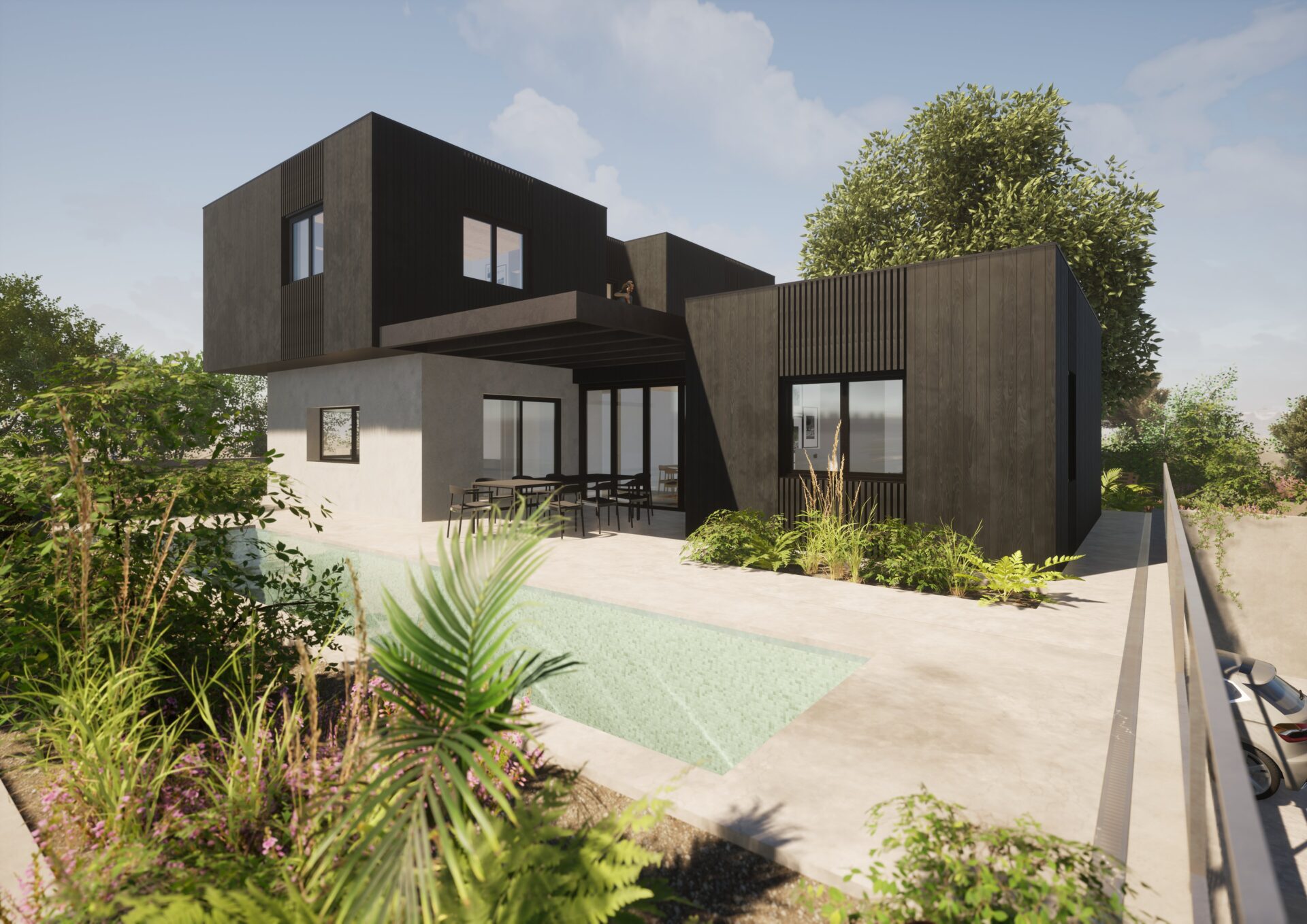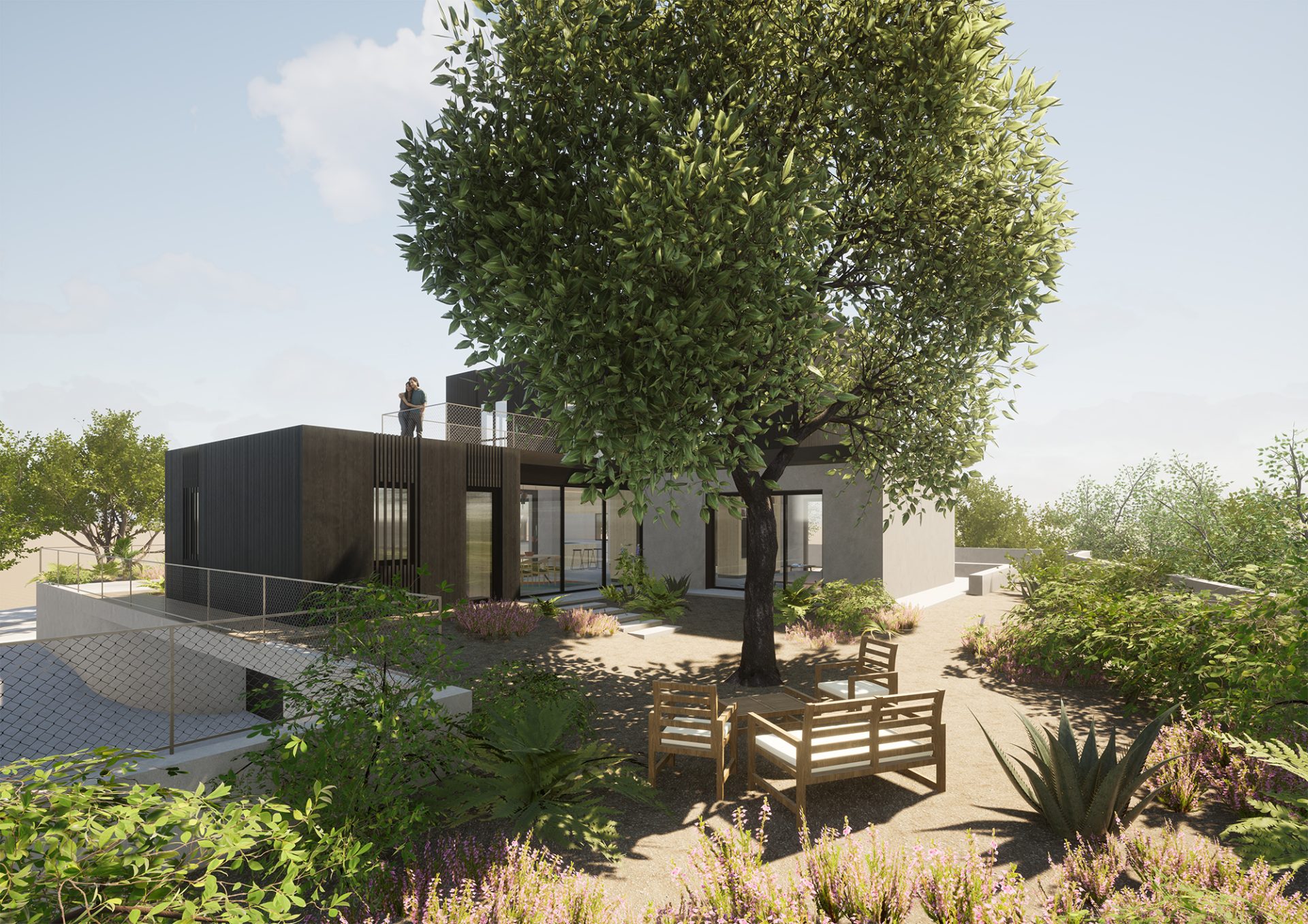This house was designed for two engineers who bought an empty plot with little views, but walking distance from the village centre. The brief was to build a simple yet interesting house for their retirement, which incorporates the large oak tree that occupies approximately a quarter of the surface area of the plot.
As the tree lies on the North corner of the plot, we pushed the house to the South corner and designed it in an L-shape, wrapping itself around the tree. With no views to speak of it made sense for the house to be somewhat introverted, focused on the tree and with a sheltered courtyard garden space that celebrates it. The pool, however, had to be positioned on the South side for maximum sunlight (and away from falling leaves). We created a connection between both gardens in the form of a dining room, as a transparent space that connects the cool, private garden on the North with the sunny, more exposed garden on the street side. This design allows one to see directly through the house, framing the view of the tree.
With an entirely glazed façade that can be opened completely, the dining room becomes like an open, covered porch and encourages cross ventilation through the space. It also serves to separate the two-storey volume of the main house from the annex which contains the guest bedroom that doubles as a private office and the guest bathroom. We differentiated between living and bedroom spaces by cladding their exterior walls in different materials. The annex and upstairs bedrooms are clad in charred Cypress wood, using a Japanese technique called Shou Sugi Ban, which burns the outer layer of the wood for weather-proofing, thus turning it black.
Living spaces such as lounge and kitchen have walls rendered with uneven texture in a light tone, thus creating a contrast, which continues in the interior of the house. Inside we used a mixture of plastered walls and exposed CLT ceilings (except where false ceilings are needed). Built-in furniture matches the CLT and many art works liven up the design, all painted by one of the couple’s father.
The house is designed as a Passivhaus meaning very little heating and cooling is needed throughout the year, while a sophisticated ventilation system with heat recovery controls interior room temperature and humidity. The construction method is a mixture of CLT (Cross Laminated Timber) slabs and walls combined with timber wood frame walls, with continuous insulation preventing thermal bridges and consequent heat loss / gain.
One of the biggest challenges of the project was in finding a way to include a double garage in a basement which, due to strict regulations, had to sit directly below the footprint of the ground floor, be accessible with a ramp that wasn’t too steep and not destroy the root system of the tree. In the end we resolved this by creating a ramp on the lower side of the plot with a comfortable slope and sufficient space for comfortably manoeuvring a vehicle.


